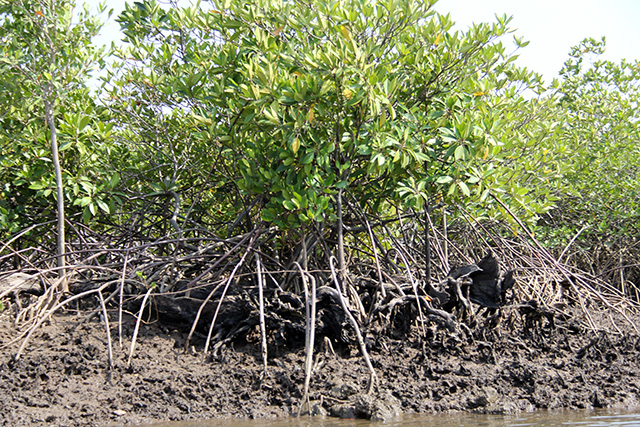An Ecological Mystery Black Mangroves: Are They Good or Bad for Texas Coastal Wetlands?
Researchers Led by Texas A&M Galveston Are on the Case

A team of researchers from the University of Houston and Florida International University, and led by Principal Investigator Dr. Anna Armitage, associate professor of marine biology at Texas A&M University at Galveston, will use part of $1.7 million in grants from Texas Sea Grant to solve this mystery. The Texas Sea Grant College Program at Texas A&M University in College Station, TX is funding seven two-year research projects at universities around the state to support coastal and marine ecosystems, communities and economies. Dr. Armitage will be researching how the increasing abundance of black mangroves on the Texas coast will affect coastal wetland plant communities and wetland food webs that support coastal living resources.
Black mangroves are tough. They survive and thrive in harsh environments with muddy, salty water and hot temperatures. Their roots, submerged in water, create an unusual filtration system that screens out salt. Their tangled root system holds the mangroves up firmly, even in the soft, ever-changing and unstable wet mud where water and land meet.

Interesting, but so what? Well, mangroves are thriving on the Texas coast, which may change how the wetlands function in the future. But is this change for better or for worse?
Along the Gulf of Mexico coastline, wetlands support a variety of plants. Black mangroves are becoming increasingly common throughout the region. This shift in the coastal environment is seen across the Gulf of Mexico and may continue to progress in response to warming winter temperatures and sea level rise. As mangroves displace marsh plants, this could alter the value of wetlands as shelter and as a source of food for many creatures, from shrimp to fish to birds.
“Although it is suspected that the increasing abundance of mangroves will alter coastal wetland dynamics, we are just beginning to understand what those changes could mean for the animals that rely on coastal wetlands, particularly on the Texas Gulf Coast,” said Armitage. “At this point, coastal managers simply do not know if the increase in mangroves will result in improved, neutral or degraded ecosystem functions.”
The research is important because coastal wetlands are ecosystems that support many creatures that in turn make vital contributions to local economies. Coastal birds support a vigorous ecotourism industry that brings millions of dollars to the Gulf Coast economy each year. Commercial and recreations fisheries can bring in well over a billion dollars to the Texas economy each year. To preserve – and possibly improve – these resources and keep our coast healthy, the mysteries about how mangroves affect our coast must be solved.
Texas Sea Grant research investments, such as this, will generate substantial social, economic and environmental impacts, help develop the workforce and contribute to the sustainability of Texas’ natural and built environments. The overarching goals of Texas Sea Grant’s research program are to support outcome-oriented research that spans broad areas of natural, physical, social, behavioral and economic sciences and engineering, and to make research investments that will generate substantial positive impacts for the people, economy and ecosystems of Texas. Projects must also fit within one of the program’s four focus areas: Resilient Communities and Economies, Sustainable Fisheries and Aquaculture, Healthy Coastal Ecosystems, and STEM (science, technology, engineering and math) Education and Workforce Development.